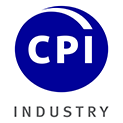ASHRAE publishes 2017 Version of Thermal Comfort Standard
Atlanta, Georgia, USA: The 2017 edition of ASHRAE’s major thermal comfort standard has been published to incorporate seven published addenda to the 2013 edition.
ANSI/ASHRAE Standard 55-2017, ‘Thermal Environmental Conditions for Human Occupancy’, simplifies the language of the 2013 standard and clarifies the three comfort calculation approaches in Section 5.3.3, “Elevated Air Speed”. The 2017 edition includes a new requirement to calculate the change in occupants' thermal comfort from direct solar radiation.
“The updates to Standard 55-2017 are the result of a continuing series of modifications made based on new research, experience, and proposals from designers, manufacturers and users,” said Abhijeet Pande, Chair of the Standard 55 committee. “Standard 55 has been rewritten with a renewed focus on application of the standard by practitioners and use of clear, enforceable language.”
The three comfort calculations methods provided in the 2017 edition are:
- A graphic method for simple situations,
- An analytical method for more general cases, and
- A method that uses elevated air speed to provide comfort.
Other additions include simplification of Appendix A to a single procedure for calculating operative temperature; clearly stated requirements and calculation procedures appearing sequentially; an update to the scope to ensure the standard is not used to override health, safety; critical process requirements; and removal of permissive language.

